The Netherlands

- Poem by Truus Menger: Syndrome '40-'45
- Hannie Schaft, Truus Menger-Oversteegen and Els Schalker-Karstanje
- Gays and lesbians in war and resistance ([Arondéus, Bakker, Belinfante, Hofman, Last, Niemeijer, Paré, Versteegh, Pekelharing, Stijkel, Toethuis][Diekmann, Engelschman, Van Leeuwen, Leker, Methorst, Winter][Frommel, Cordan, Gothein, Weyand][Cohen, Cohen, Hiegentlich, Hoepelman, Metzelaar, Walvisch, Waterman, van Win])
- Poem by Cornelis Putemmer
- Impression of the event 'Every human deserves respect'
- Sources / Additional reading
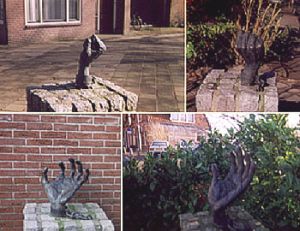
Picture: www.hoorn.nl
'The Hands' by Truus Menger mark the route of the annual quiet procession in Hoorn. 'The Hands' represent 'farewell', 'anger', 'despair' and 'comfort'.
Syndrome '40-'45
Forgive me
if I spoil your dream now
Forgive me
when I cry petrified tears
it's like hearing it yesterday
and I walk with you through
leafless lanes
Embrace me
when I seem to drown
or when the night seems so endless
Embrace me my love
when loud salvoes are heard
from the past
that turns out to be today.
Truus Menger, artist and friend of Hannie Schaft.
Hannie Schaft, Truus Menger-Oversteegen
and Els Schalker-Karstanje
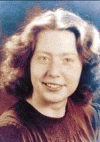
Hannie Schaft (Picture: Resistance Museum)
De red-haired student Hannie Schaft joined a resistance group in Haarlem in 1943. The tas of this group was to eliminate traitors. Necessary work, Hannie and her comrade Truus Menger thought.
"We had no prisons, there was no another solution. I disguised myself as a man, so that Hannie Schaft and I could act as a young couple in love. And there you find yourself 'embracing' with a gun ready to fire. Then this guy comes out the door and you go after him, very nervous. Then we exchange another 'kick', like 'there he goes, that bastard', to support one another in that difficult decision".
Truus Menger, resistance fighter
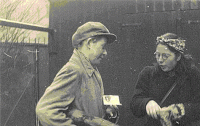
Truus Menger and Hannie Schaft in action (Picture: Resistance Museum)
Els Schalker–Karstanje and Truus Menger–Oversteegen don't act like old ladies. They feel at home with young people, especially those who don't go along with the crowd and are critical. In 1940 they were 16 and 17 years of age. As young girls they participated in the resistance. Truus Menger, with her sister Freddie and Jan Bonekamp, members of the resistance group of Hannie Schaft. ‘No, of course you couldn't join the resistance just like that,’ Els says. ‘My family was already active in the early thirties when in Germany the first persecutions started. We took in refugees who were actually illegal, because The Netherlands was still a neutral state and Germany a friendly nation.’ Both are irritated by todays policy on refugees and by people who oppose the arrival of asylum seekers without knowing anything about their backgrounds.
Heroes? People from the resistance are often seen as heroes. But Truus and Els believe this isn't only about the past but precisely about your actions now. Truus: ‘Because of what you've experienced in the past, you remain an optimist. There'll always be idealists to protect humanity.’
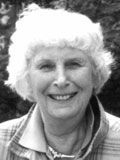
Els Schalker-Karstanje (Picture: www.kindermonument.nl)
To the question what she would do if they were still 16 or 17, Truus answers straight away: ‘O, I would join Greenpeace, go on that ship of course.’ Both feel involved with anti-racism, the environmental movement and Amnesty International. Els is co-founder of the 'Zuid-Hollands Verzetsmuseum' (Resistance Museum of Zuid-Holland) and regularly visits the former concentration camp Dachau where international groups of young people meet. Truus has been asked many times as a speaker at events and universities, including other countries. She is an artist. On various locations there are sculptures and monuments made by her hand. The meetings inspire: ‘It's about today's young people, because the future is theirs, we hope they'll learn from us not to accept it when your friend is bullied, or people are discriminated against.'
Who was Hannie Schaft?
Initially the Germans did not expect women to also be in the armed resistance during WWII. In their minds they saw women as just taking care of their husbands and children. Only later during the war they understood that some prams held not only babies but also weapons and that young schoolgirls on bicycles could deliver many illegal pamphlets. Courier's work was carried out mainly by women in the resistance. Other activities like sabotage, assaults en liquidation of Germans or traitors were usually done by men. With a few exceptions that is, such as 'the girl with the red hair', Hannie Schaft.
At the age of 22, Jo Schaft, as she was called by family and friends, found herself in the Haarlem resistance. It was a logical consequence of the anger she developed against the Germans over the years. As a child she already had a well developed sense of justice. Her parents were social-democrats who were fully aware of the world around them. In the Schaft family there was a lot of discussion about all kinds of political subjects. They were very closely knit, a bond which grew even stronger after the death of Hannie's younger sister. Because her parents were very afraid something might happen to their only remaining daughter, Hannie was brought up in a very protective environment. This left her quite isolated and she had few friends. Hannie occupied herself mainly with school, where she got very high grades.
In 1938 Hannie started studying law in Amsterdam. She became a member of the 'Amsterdamse Vrouwelijke Studentenvereeniging' (Amsterdam Women Students Society). Soon her isolation was ended. With a couple of students she founded within the Society a new debating group. About these discussions another student said: 'Jo took a leading role. And with regard to her political convictions, she was pretty 'red' and made no secret of it. A hothead. Always fiercely opposing any injustice in the world."
When in 1940 the war started, Hannie, like all other students, continued her study and in July 1940 she obtained her bachelors degree. To avoid traveling between her home in Haarlem and Amsterdam, she rented rooms in the university city. Meanwhile her anger against the German occupiers grew. Her Jewish fellow students Sonja and Philine were increasingly impeded by anti-Jewish measures. When they had to wear a yellow star and were restricted in their movements, Hannie stole two identity cards from non-Jewish women in a swimming pool. These were not the last two she stole. She also sent parcels to Westerbork and other camps.
When in 1943 the Germans demanded a loyalty statement from every student, her own life changed dramatically. For Hannie this meant the end of her studies. A friend recalls: 'It was inconceivable to her that any good Dutch citizen would sign such a paper. It was a matter of solidarity, not only with other students, but also with groups within our country who suffered much more from repression and were being deported.'
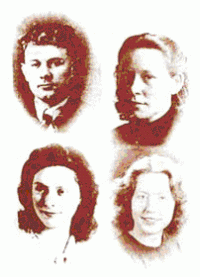
Jan Bonekamp, Truus and Freddie Oversteegen, Hannie Schaft (Picture: Resistance Museum)
Early in 1943 Hannie left for Haarlem, with Sonja and Philine, so that they could go into hiding at her parents' house. There she joined the left wing sabotage group the 'Raad van Verzet' (the 'Resistance Council'), to play a more active role in the resistance. The 'Council' had already carried out many sabotage actions and assaults. The sisters Truus en Freddie Oversteegen were members of this group, as was the militant Jan Bonekamp, who left wife and child to dedicate himself to the battle against the Germans. Hannie greatly admired Jan.
She did not inform her parents about her resistance activities. For their own safety and the safety of their refugees it was best they knew as little as possible. Sonja however could not endure her 'voluntary' imprisonment. She tried to flee to Switzerland but, as was discovered later, she was betrayed in France and she died in Auschwitz.
After receiving instructions about weapons and a lesson in shooting Hannie was ready for her first action. She was ordered to shoot a member of the Sicherheits Dienst (German Security Police). When she pulled the trigger instead of a shot only a click was heard: there were no bullets in the gun. Hannie had just undergone a 'skill and trustworthyness test', which made her very angry.
The next actions were the real thing. On one of these occasions Jan Bonekamp was killed. The man he and Hannie had to liquidate was not dead and was able to fire another round into Jans' stomach. Hannie had already left on her bicycle and waited in vain at a secret location for Jan to return. He died after the Germans managed to get some more addresses out of him, including Hannie's.
As a result of these events Hannie's parents were taken hostage. The Germans were hoping that Hannie would report to them. However her comrades kept Hannie from turning herself in and after some time the Germans released her parents. Apart from this hostage taking, Jans' death left Hannie very downhearted. In a letter to Philine she wrote: 'My state of mind is still abominable: I can't read a book, neither a novel, nor a textbook. I'm not as tough as I thought: the encounter with death has hit me hard.' Only by doubling her efforts she was able to more or less forget about her grief. She took on the most dangerous jobs. She was no longer interested in any danger to her own life. During the last year of the war Hannie was usually in action together with the sisters Oversteegen.
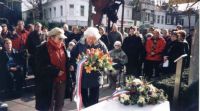
Hannie Schaft Monument - Westzijde, Zaandam (Picture: www.hannieschaft.nl)
In her book about the war, 'Not then, not now, not ever' (1982) Truus Menger recalls some of these actions together. One of them was the liquidation of the collaborator Ko Langendijk. Hannie shot this man from the back seat of Truus' bicycle. A bit further on they went into a pub. Truus showed her gun to the customers and indicated that, if the Germans would ask, they should say they had been there for hours. After putting on a bit of tarty make-up, 'a bit posh', they sat at a table acting drunk. Passing Germans were not impressed by these two 'cuddly' ladies and, after a brief check, left them alone. On March 21, 1945 Hannie was arrested at a road checkpoint, while possessing illegal pamphlets.
At the station a German officer connected her to 'the girl with the red hair' who has been involved in so many assaults and sabotage actions. Because of this her arrest became a great more important. Despite the deal the Germans made with the Dutch Forces at the end of the war not to execute any more people, Hannie was shot four weeks after her arrest. Her resistance friends tried to find out where she was being held prisoner to be able to free her. When Truus finally found out, Hannie's name had been erased from the prison records.
December 10, 2005
every human deserves respect
well, that's what we hope for
our past is stained
but the future still lies open
well, that's what we hope for
sometimes it's all a bit confused
but the future still lies open
with or without a headscarf
sometimes it's all a bit confused
our past is stained
with or without a headscarf:
every human deserves respect!
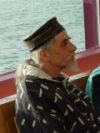
Cornelis Putemmer, pseudonym for Kees Aker,
since March 2005 city poet of Hoorn,
writer of poetry collections like 'Laughing vultures and other animals'
and 'Just listen' (to be published end 2008),
died on 23 October 2008. May he rest in peace.
|
Impression from the event 'Every human deserves respect' On December 10, 2005 - Human Rights Day - PRIMO nh organised the event 'Every human deserves respect (1945-2005)' in 'The Park' theatre in Hoorn. In co-operation with the City of Hoorn, the Netwerk Foundation, Immigrant and Youth Organizations, and Amnesty Hoorn various activities were organised around the theme ‘Every human deserves respect'. The goal of the event - 60 years after the Second World War - was to take lessons from the violent years of war and connect them to the lives of immigrants and young people of today - report (pdf). |
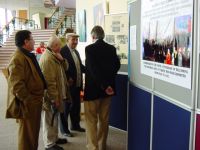 |
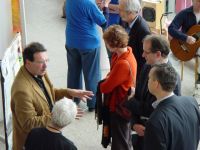 |
 |
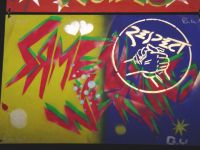 |
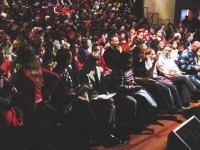 |
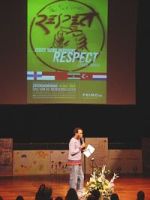 |
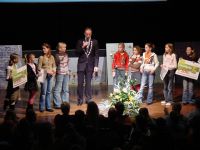 |
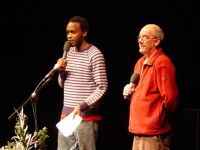 |
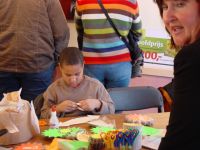 |
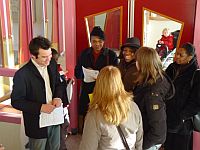 |
 |
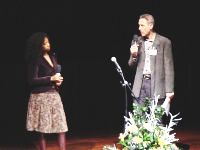 |
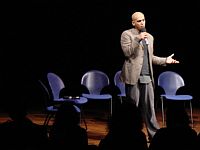 |
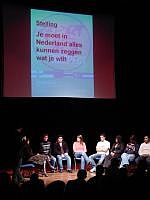 | Pictures: Marja Eijkhoudt |